Cat Scratch Diseases
Cat Scratch Disease (CSD), also known as cat scratch fever, is an infectious disease caused by the bacterium Bartonella henselae. The primary mode of transmission is through scratches or bites from infected cats, particularly kittens carrying the bacterium. CSD commonly presents with swollen lymph nodes near the site of injury, along with fever, headache, and fatigue. In severe cases, complications such as neuroretinitis or disseminated infections may occur. Diagnosing CSD involves clinical evaluation, including a history of cat exposure and characteristic symptoms. Serological tests, such as enzyme immunoassays, can confirm the presence of antibodies to Bartonella henselae. Polymerase chain reaction (PCR) assays may be used to detect the bacterium's DNA in tissue samples. Treatment for Cat Scratch Disease is usually supportive, as the majority of cases resolve spontaneously. In severe or prolonged cases, antibiotics such as azithromycin or doxycycline may be prescribed. Preventive measures include avoiding rough play with cats, especially kittens, and promptly cleaning and disinfecting cat scratches or bites.

Francis J Castellino
University of Notre Dame, United States
Ranjan Ramasamy
ID-FISH Technology, United States
Saurabh Chattopadhyay
University of Kentucky College of Medicine, United States
Rico Leonardo Lizbinski
Northern Light Health, United States
Sasha Leibholz
New York Presbyterian Columbia/Cornell, United States
Lauren Gruffi
New York Presbyterian Columbia/Cornell, United States



Title : Changing population immunity to COVID-19 in the context of infection, vaccination, and emerging SARS-CoV-2 variants
Ranjan Ramasamy, ID-FISH Technology, United States
Title : Extensively drug-resistant bacterial infections: Confronting a global crisis with urgent solutions in prevention, surveillance, and treatment
Yazdan Mirzanejad, University of British Columbia, Canada
Title : Bioterrorism through the ages: Historical perspective, emerging threats, and medical countermeasures
Claudia Ferreira, Sorbonne University, France
Title : Measles vaccination coverage indicators in 2023 and advance towards measles elimination and eradication by 2030
Pedro Plans Rubio, College of Physicians of Barcelona, Spain
Title : Pathogen-derived noncanonical epitopes: Are they valuable targets for novel vaccinations and shall we be concerned about autoimmune responses?
Michele Mishto, Francis Crick Institute, United Kingdom
Title : Severe influenza and other related respiratory infection cases during Omicron era in Japan
Masafumi Seki, Saitama Medical University International Medical Center, Japan